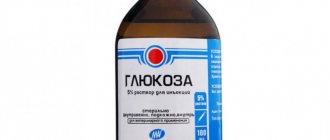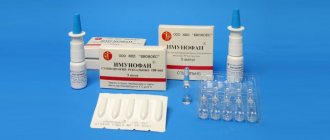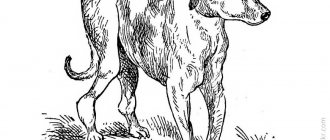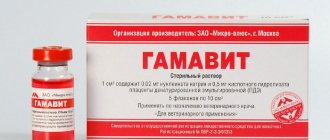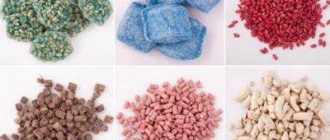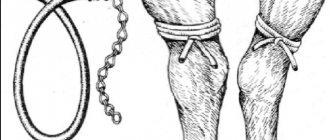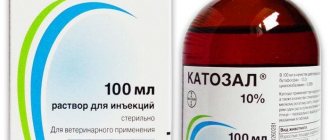Domestic veterinary drugs
VICASOL. Vicasolum.
Synonym: vitamin K3.
Properties. It is a derivative of naphthaquinone; Compared to natural vitamins, it is more active. Vikasol is a white, yellowish, fine-crystalline powder, odorless, bitter taste; easily soluble in water; difficult - in alcohol. Stable when heated. Contains at least 95% vitamin K.
Release form. Available in powders, tablets of 0.015 g and in ampoules of 1 ml and 5 ml, in the form of 1% and 3% solutions, respectively.
Store with caution (list B), in a well-closed container and protected from light.
Action and application. Vitamin K ensures optimal levels of prothrombin and thromboplastin in the blood and reduces its clotting time. Has an analgesic effect and promotes wound healing. Intensive microbial synthesis of vitamin K has been established in the digestive tract of animals and birds, which prevents the development of its deficiency under normal conditions. The use of antibacterial drugs, anticoccidiostats (sulfaquinoxaline), and salicylates slows down the synthesis of vitamin K.
Vitamin K is used for hypo- and avitaminosis K, hepatitis, various bleedings (capillary and parenchymal), hemorrhagic diathesis, wounds (to accelerate the healing of sluggishly granulating wounds), acute liver diseases, surgical interventions, overdose of anticoagulants (dicoumarin, phenylin), radiation sickness, warfarin poisoning, mold toxins.
What is Vikasol for dogs? During the autumn-spring periods, there is an acute lack of vitamins, and the dog feels it no less (if not more) than you. It is important to remember that the dog, like you, needs various macro- and microelements.
Dog owners pay attention to walking, feeding and training. But do not forget that monitoring the general condition of the dog’s body is the same necessary precaution and care, which means you need to visit the veterinarian not only when there are acute reasons, but also for preventive examinations.
The drug "Vikasol" is a fat-soluble form of vitamin K, which is available in ampoules and tablets. This vitamin, necessary for the normal functioning of the pet’s body, is also called phylloquinone.
The main function of the vitamin is to normalize metabolic processes and blood clotting. The presence of this substance in the animal’s body has a significant effect on protein synthesis and the formation of bone and cartilage tissue.
What is Vikasol needed for?
Thanks to the rapid development of veterinary medicine, we know that the importance and benefits of Vikasol (K2) are due to the fact that it is responsible for the normal synthesis of proteins that enter the body, as well as for the full metabolism necessary to maintain life. Vitamin K ensures metabolism at the cellular level and acts as a catalyst in the synthesis of certain liver proteins, which are necessary for good blood clotting and to ensure there is no risk of thrombosis.
Sources of vitamin
Fish meal and bone meal are average sources of vitamin K2, but they may not be present in your dog's diet in the full amount needed for adequate production of the vitamin. What to do you ask? Science has made great strides forward and has learned to produce synthetic substances that become, if not substitutes, then definitely good analogues of natural vitamins. Such components mainly contain vitamin K3. The latter is transformed in the dog’s body into vitamin K2 in its active form.
What if there is a shortage?
What can a lack of this vitamin lead to in a dog’s body? In case of a deficiency of menaquinone (that is, vitamin K2), there is a risk that even with small and minor external or internal injuries, major bleeding (hemorrhages) is possible in different organs and tissues of the body.
The latter, according to medical statistics, causes death for the animal. You should be careful with treatment with antibacterial drugs (antibiotics), since the destruction of intestinal microflora is directly related to the amount of vitamin K in the body.
Application
Vikasol is used to prevent internal bleeding after surgery, in case of poisoning with toxins, various forms of hepatitis, jaundice, or the presence of other injuries. By the way, many owners call Vikasol for dogs in case of poisoning one of the best solutions. The drug reaches its maximum effectiveness only 15 hours after use.
Application is possible in the form of a white free-flowing powder, which dissolves well in water, but has a bitter taste. The drug is commercially available in the form of ampoules with a capacity of 1-2 ml for injection. The solution is a 1% liquid, containing 1 mg of menadione sodium bisulfite per 1 ml of volume.
The instructions for Vikasol for dogs state that the dosage of Vikasol in this case for dogs is 0.01-0.03 g/kg. In addition to these forms, there are also Vikasol tablets (usually 25 pieces or 50 pieces per package). Each of them contains 15 mg of the active component mentioned above.
Application of Vikasol
Vitamin K deficiency can cause the slightest injury to cause bleeding that is difficult to stop. In addition, lack of vitamin:
- increases capillary fragility, which increases bleeding even with the slightest bruises or injuries;
- disrupts biological processes in the body, primarily in the liver.
In severe cases, this will lead to the death of the animal. A lack of vitamin K is especially dangerous when a dog is poisoned, so Vikasol is considered an effective antidote in cases of animal poisoning with rat poison.
Once in a dog’s body, Vikasol activates the liver to produce a special substance that improves blood clotting. Due to the pronounced hemostatic properties of the drug, it is prescribed in the following cases:
- for capillary and internal bleeding;
- stomach ulcer in case of bleeding;
- with hepatitis and cirrhosis of the liver, other diseases of this organ;
- with uterine bleeding in females.
The coagulant is used after surgical interventions and injuries that lead to open wounds and damage to internal organs. It improves tissue regeneration, promoting faster wound healing.
In case of poisoning with rat poison - coumarin - Vikasol is used as an antidote, but since its effectiveness appears only 7-12 hours after administration, it is necessary to combine the medication with other first aid methods:
- gastric lavage;
- taking other fast-acting drugs, for example Konakion.
Signs of phylloquinone deficiency in the body
Below is a list of problems for which the Vikasol injection is considered mandatory.
- joint diseases;
- severe wasting with a progressive tendency;
- problems with blood clotting - if even a very small wound or cut bleeds for a long time;
- diseases of the genitourinary system;
- severe anemia;
- blood poisoning by parasites;
- liver disease, especially if it is chronic;
- cholecystitis.
Urgent injections are required in case of acute poisoning or if a biochemical analysis of the animal’s blood shows a minimal amount of phylloquinone and prothrombin.
How to use the drug
In pharmacies, Vikasol is sold in the form of tablets and oil solution. 1 ml of solution contains up to 10 mg of active substance. 1 tablet contains 15 mg. The tablets are given to the animal along with food, and the solution is administered intramuscularly. During injection, the drug should not be cold. It is slightly heated.
How to calculate the required dose? For every kilogram of your pet's weight, you need to take 1-2 mg of Vikasol.
Side effects or harm of Vikasol
As a consequence of the fact that Vikasol can be administered intramuscularly to a dog, pain is caused in the dog. Swelling may occur at the injection site. The harm and benefits of Vikasol for dogs are assessed individually by a veterinarian. Self-medication is unacceptable here.
A lack of phylloquinone has a negative impact on the health of dogs, especially large breeds. Why is so little known about this drug and why is it not included in animal nutritional supplements?
Vitamin K is found in sufficient quantities in animal and plant foods. If the pet's diet is well balanced and the dog receives the entire list of products, there is no need to add phylloquinone.
Reviews
Nina, Volgograd
We will present only drugs that have been tested by veterinarians, and most importantly, time-tested. To prove this, consider a few reviews:
“We faced a problem like an ulcer. Our Nancy spends a lot of time with her son, so as soon as he noticed strange behavior, he was immediately taken to the veterinarian for an examination. In the conclusion of the latter, he clearly indicated - an ulcer. During the examination, it turned out that there was already internal bleeding, which means it must be treated immediately. They prescribed Vikasol and did an excellent job. But it is important to consider that such an effect is achieved only during complex treatment, and not with one drug.”
Victor, Ryazan
“I was shocked when, upon returning from work, I found Phil vomiting blood. It became clear that the rumors that they started poisoning dogs in the yard were not rumors at all. I immediately realized that the matter was connected with poison. The dog is in the car and to the vet. Vikasol was prescribed as an antidote. It was done quickly and everything worked out well.”
Olga, Moscow
“I gave my sister a puppy for her birthday, she always dreamed of him. Naturally, a trip to the veterinarian was the first thing done. They explained to us that this vitamin plays an important role in the formation of bone tissue and its subsequent mineralization, so they prescribed Vikasol as a preventive measure while the musculoskeletal system is still forming. Jersey is growing, there are no problems with taking pills at all. I recommend it, but be sure to discuss this with your veterinarian!”
And these are just a few of the thousands of positive reviews from real people who once faced real problems with their pets. However, you should not self-medicate your dog. The key to recovery is timely consultation with a competent specialist, detection of the problem at an early stage and, of course, comprehensive treatment, proper nutrition and adherence to the regime.
About the author: Anna Aleksandrovna Maksimenkova
Practicing veterinarian in a private clinic. Directions: therapy, oncology, surgery. Read more about me in the “About Us” section.
One of the pathologies familiar to man since ancient times is bleeding. As soon as our distant ancestors learned to provide first aid for hemorrhages themselves, they began to help domesticated animals. Today, the approach to treating bleeding and its causes is much broader, since in addition to bandages and cotton wool, medications are used for this. These include Vikasol for cats.
Characteristics of the drug
This is the name of the solution or tablet form of regular vitamin K, better known as phylloquinone. It is no coincidence that we paid so much attention to bleeding at the beginning of the article: this substance is one of the key coagulation factors. If there is no vitamin in the cat’s body at all, or its content is close to critically low, normal blood clotting becomes impossible, and the animal can die even from minor injuries and cuts.
In general, this substance is a kind of “mystery”, since many of the functions of phylloquinone have not yet been properly studied. Of course, we went a little overboard when pointing to bleeding due to a lack of this vitamin: such cases exist, but they are quite rare. This is due both to the widespread occurrence of “K” in food and to the relatively small need for it. But you definitely shouldn’t underestimate this vitamin. It is no coincidence that two scientists received the Nobel Prize for its discovery (1943, Dane Henrik Dam and American Doisy).
Attention! Today, science has established that without phylloquinone, the synthesis of key proteins that the body needs for the normal course of the blood clotting process is impossible. Relatively recently, scientists have found that this same vitamin is responsible for the “consistency” of blood.
But this is not the only reason why this connection is valuable! The second discovery, for which scientists have also received worldwide recognition, is the necessity of vitamin K for the transport of nutrients into tissues. Any problems with obtaining phylloquinone are fraught not so much with bleeding, but with pathologies of bone and cartilage tissue! When they lack nutrition, necrotic and dystrophic processes are possible.
Finally, this same substance is actively involved in liver metabolism, which is especially important in case of poisoning, including salts of heavy metals.
Reviews from dog owners and specialists
Vikasol is always in my medicine cabinet. Recently, the owners of a dog with uterine adenocarcinoma contacted me. I had to operate, everything was successful, but internal bleeding began. Prescribed Vikasol intramuscularly. We recently brought our dog in for a medical examination - she is doing well.
Irina Fedotova, owner of a Western European Shepherd
My Dorothy was diagnosed with liver toxicity. Comprehensive treatment was prescribed, including Vikasol. I injected myself, I am a nurse by profession. Already on the third day, the yellowness of the skin decreased, the dog became more active, ate and drank, and quickly began to recover.
Alena, owner of a dachshund
My baby had her first birth and started bleeding. I called the veterinarian to the house, he prescribed a course of Vikasol. The bleeding was quickly stopped, and then we took tests that showed that blood clotting had improved.
Tatyana, veterinarian at a private veterinary clinic
I use Vikasol in my work when I have to deal with wounds and surgical operations - it improves blood clotting and promotes rapid tissue healing. The drug is also prescribed for poisoning and liver diseases - dogs recover faster if owners seek help in time.
What is Vikasol for dogs? During the autumn-spring periods, there is an acute lack of vitamins, and the dog feels it no less (if not more) than you. It is important to remember that the dog, like you, needs various macro- and microelements.
Dog owners pay attention to walking, feeding and training. But do not forget that monitoring the general condition of the dog’s body is the same necessary precaution and care, which means you need to visit the veterinarian not only when there are acute reasons, but also for preventive examinations.
The main function of the vitamin is to normalize metabolic processes and blood clotting. The presence of this substance in the animal’s body has a significant effect on protein synthesis and the formation of bone and cartilage tissue.
Symptoms of vitamin K deficiency and indications for use
They are quite severe, but develop gradually. So there is enough time to notice clinical manifestations:
- Blood biochemistry may reveal a lack of prothrombin. This is the most important protein involved in the coagulation process. If the amount of protein decreases to 15-20% of the normal level, the cat may die at any time from massive internal bleeding.
- Due to the important role of vitamin K in metabolism, when it is deficient or poorly absorbed, progressive depletion occurs.
- Persistent liver diseases, especially cholelithiasis and chronic cholecystitis, can also prompt an experienced diagnostician to think about problems with phylloquinone.
It should be taken into account that with long-term use of antibiotics and drugs from the sulfonamide group, problems with prothrombin synthesis are also observed, caused, among other things, by the destruction of vitamin K.
So, when should you give your cat Vikasol? Firstly, it will definitely not interfere with animals recovering from severe injuries, especially wounds, as well as those in the recovery period after infectious diseases. Vikasol is especially indicated for those cats who have suffered from some kind of blood-parasitic infection!
Secondly, it is extremely necessary for poisoning with almost all types of rat poisons, since they cause severe internal bleeding, blocking the blood clotting function. Indirectly, this drug is necessary for urolithiasis (that is, urolithiasis). Of course, phylloquinone itself will not dissolve stones, but it will significantly reduce the risk of death or anemia from constant blood loss resulting from injury to the urinary system.
Important! There are cases where cats have been diagnosed with a lack of vitamin K... due to the abuse of garlic sausage! In case you like to “pamper” your pet, remember that this product (as well as garlic, of course) contains substances that destroy phylloquinone.
Considering all of the above, vitamin K is essential for cats undergoing antibiotic therapy for any disease. Of course, when using sulfonamides, Vikasol for animals will also not be superfluous.
Directions for use and doses
It is best for cat owners to use tablets, since their simple use does not require any veterinary or medical skills. Each pill contains 15 mg of active ingredient. Per kilogram of live weight requires 1-2 mg. Simply put, the average cat needs about ¼ of a tablet. The frequency of use and duration of treatment must be determined by a veterinarian. As a rule, the duration of therapy is from 3 to 5 days.
One milliliter of solution contains 10 mg of active substance. The drug is oily, and therefore before use it should be heated to a temperature of approximately 37 degrees. The medicine is administered intramuscularly. When using antibiotics simultaneously, it should be taken into account that the efficiency of drug absorption is reduced. Perhaps the dosage should be increased slightly, but consultation with a veterinarian is necessary.
Bleeding is a pathology known to people since ancient times. Man has long learned to help himself and animals if such trouble arises. An effective remedy to help fight bleeding is Vikasol for cats.
Contraindications and side effects
Taking Vikasol for self-medication is prohibited, since the drug has a number of contraindications:
- individual intolerance to the drug;
- increased blood clotting;
- thromboembolism;
- liver dysfunction.
During pregnancy, the drug is prescribed to females only after a veterinarian has assessed the risk for the animal and its offspring. If it is necessary to take antibacterial drugs simultaneously, the dose must be adjusted, since antibiotics suppress the effect of Vikasol.
Side effects may occur if you are intolerant to the components of the drug. In this case, the following are possible:
- rash and redness on the skin;
- itching;
- bronchospasm.
Complications after taking Vikasol rarely occur; swelling may appear at the injection site, but it will go away quickly.
Characteristics of the substance
Vikasol is a tablet or solution of ordinary vitamin K, otherwise called “phylloquinone”. Vitamin K is one of the main agents responsible for blood clotting. If there is insufficient amount of phylloquinone in a cat’s body, normal blood clotting is impossible, and as a result, the animal can die even from minor cuts or injuries. That is why Vikasol is widely used in veterinary medicine.
What the functions of phylloquinone are is currently not fully established, but it is known for certain that without vitamin K, the synthesis of proteins required to ensure blood clotting is impossible.
Description: Vikasol is a white powder, without a pronounced odor, with a bitter taste, and is perfectly soluble in water. Available in tablets and as a solution in 5 ml ampoules.
general characteristics
Vikasol is a coagulant that has long been successfully used to treat the liver and improve blood clotting in humans. It is no less actively used in veterinary medicine. This is an artificial substitute for vitamin K, an insufficient amount of which reduces blood clotting, so the slightest wound in an animal can lead to extensive blood loss.
The active ingredient of the drug is menadione sodium bisulfite. Vikasol is an analogue of vitamin K, obtained by chemical synthesis.
The drug is available in two dosage forms - tablets for oral use and solution for injection. The content of the active substance in the medicine depends on the dosage form:
- in tablets – 15 mg;
- in solution for injection – 10 mg/1 ml.
Consequences of phylloquinone deficiency in the body
Symptoms and consequences of phylloquinone deficiency develop gradually and differ in severity of manifestations:
- Disruptions in the transport of nutrients to tissues.
- Pathologies of cartilage and bone tissue (dystrophy and necrosis due to lack of nutrients).
- Vitamin K takes part in the metabolic processes of the liver, therefore it is necessary for poisoning; without it, the liver will not be able to neutralize toxins. Chronic cholecystitis and cholelithiasis may occur. Long-term use of antibiotics (especially the sulfonamide group) provokes problems with the synthesis of prothrombin, as vitamin K is destroyed.
- A biochemical blood test reveals a lack of prothrombin, the most important protein involved in blood clotting. If the amount of prothrombin decreases by 15% of the normal value, the cat may die from internal bleeding.
- Poor absorption and lack of vitamin K in the body causes progressive exhaustion.
Vikasol injections for dogs
Consequences of phylloquinone deficiency in the body Symptoms and consequences of phylloquinone deficiency develop gradually and differ in severity of manifestations:
- Disruptions in the transport of nutrients to tissues.
- Pathologies of cartilage and bone tissue (dystrophy and necrosis due to lack of nutrients).
- Vitamin K takes part in the metabolic processes of the liver, therefore it is necessary for poisoning; without it, the liver will not be able to neutralize toxins. Chronic cholecystitis and cholelithiasis may occur. Long-term use of antibiotics (especially the sulfonamide group) provokes problems with the synthesis of prothrombin, as vitamin K is destroyed.
- A biochemical blood test reveals a lack of prothrombin, the most important protein involved in blood clotting.
Important Price: 6984 rubles Ultrasound examination of horse limbs Here is a publication, the uniqueness of which lies in the fact that for the first time in Russian the method of ultrasound scanning of horse tendons is described.
In Europe and the USA, doctors receive basic skills in working with ultrasound equipment during their university studies.
Russian doctors, especially those working in the field of equine veterinary medicine, acquire most of their knowledge themselves.
This book is not just a theoretical course or a literature review.
Color drawings, three-dimensional diagrams and photographs illustrate in detail the topographic anatomy of the distal limbs of the horse, which facilitates the interpretation of ultrasound images.
Blood clotting is an important mechanism that ensures the survival of dogs when receiving various injuries.
If the integrity of a blood vessel is compromised, the dog’s body tries to restore the tightness by forming a special clot in the blood.
If this protective physiological process is disrupted, the pet may die from blood loss. Poor blood clotting is largely due to a lack of vitamin K in the body.
The maximum effect occurs 15 hours after administration of the drug.
Method of administration and dosage The dose of the medicine is calculated by a veterinarian. The weight, age of the animal and the severity of bleeding are taken into account. For dogs, a medicine of 0.01-0.03 grams per kilogram of animal weight is recommended.
The amount of the drug for cats is also dosed, starting from 0.01 grams. The medicine is administered 2-3 times a day. In the acute period, an injection form is recommended.
If a long course of treatment is necessary, it is possible to switch to Vikasol tablets.
Contraindications and characteristics of the active substance It is not recommended to treat animals with allergies or intolerance to the components of Vikasol and pets with high blood clotting and thromboembolism.
Attention The issues of differential diagnosis of tendon injuries, as well as modern methods of their treatment, and especially with the use of autologous stem cells, are separately considered.
This book is an excellent guide for veterinarians, paramedics specializing in working with horses, as well as students of veterinary universities and colleges... Price: 625 rubles Emergency and intensive veterinary care.
Technique for performing procedures Emergency and intensive veterinary care with various invasive interventions are an integral component of emergency veterinary medicine, which not only general practitioners, but also specialists often have to deal with. This unique publication provides a richly illustrated, step-by-step description of the basic procedures performed in emergency situations.
The material in the book is compiled in the form of convenient sections, each of which describes in detail and very clearly how an ultrasound examination will look like a particular organ in a healthy animal, and what changes may occur in various diseases. The atlas contains a huge number of photographs of ultrasound images of both healthy organs and systems and various diseases, which makes this book very useful for a practicing veterinarian in ultrasound diagnostics.
This book will be an indispensable assistant both for students of veterinary universities and aspiring veterinarians, as well as for experienced specialists who want to improve their professional level...
Vikasol is considered an effective drug, and its ability to increase blood clotting has found wide application in veterinary medicine. Indications It is necessary to understand that vitamin K plays an important role in blood clotting in dogs.
It is thanks to its active participation in the production of proteins that nutrients are delivered to organs at the cellular level. Scientific research has confirmed the importance of the vitamin for bone and cartilage cells. It is not surprising that many veterinarians associate joint diseases in dogs with a lack of vitamin K.
Vikasol
That is why Vikasol is widely used in veterinary medicine.
In what cases should you give your cat Vikasol?
It is advisable to use the drug Vikasol for cats in the following cases:
- during the recovery period after severe injuries;
- during recovery from infectious diseases (especially after the cat has suffered a blood parasitic infection);
- the use of Vikasol is necessary after poisoning with any type of rat poison (this is explained by the fact that such substances provoke severe internal bleeding, while simultaneously blocking normal blood clotting);
- Vikasol should be given to cats in case of urolithiasis (Vikasol will not dissolve stones, but will significantly reduce the likelihood of the animal dying or the appearance of anemia as a result of systematic blood loss due to injuries to the urinary organs);
- garlic contains substances that destroy vitamin K, therefore cats whose owners feed garlic sausage very often suffer from a lack of phylloquinone in the body;
- Vikasol is necessary for cats when undergoing a course of antibiotic therapy, regardless of the disease being treated. Vitamin K is especially important if the disease is treated with sulfonamides.
Vikasol is prescribed intramuscularly and orally not only to cats, but also to dogs, large and small cattle, pigs, and horses.
Application and dosage of Vikasol
The drug can be given to your pet in two ways: by injection and orally. For cat owners, the optimal form of Vikasol is tablets, since giving the medicine to your pet does not require any special medical skills. One tablet contains 15 milligrams of the active substance; the dosage of Vikasol for cats is one to two milligrams per kilogram of the animal’s body weight.
One milliliter of solution in an ampoule contains 10 mg of active substance. Since the preparation has an oily consistency, it must be heated to approximately +37°C. The medicine is administered intramuscularly.
Instructions for use of Vikasol for cats:
- An animal that has a standard weight should be given approximately a quarter of the tablet (3.75 mg of active ingredient for a cat weighing 3-4 kg).
- The duration of the course of treatment, dosage and how many times a day the pet will need to be given Vikasol should be determined by a veterinarian. Most often, the duration of treatment is from three to five days.
The effectiveness of Vikasol decreases when taking antibiotics at the same time, so the dose of the medicine can be increased by a veterinarian. The drug Dicynon also helps fight bleeding in animals.
IMPORTANT! VETERINARIAN CONSULTATION REQUIRED. INFORMATION FOR INFORMATION ONLY. Share with friends Article rating
Purpose and dosage
Only a doctor should prescribe any medications. Since Vikasol has a number of contraindications, its independent use for veterinary purposes is prohibited.
The medicine is produced in two forms - in the form of tablets and a solution, which is administered intramuscularly. The injections are quite painful, but they begin to act much faster than tablets, so they should be preferred in case of poisoning or vomiting in a dog. Before injecting, you need to warm the ampoule in your hand.
Tablets are given with food or forcibly - by placing the medicine on the root of the tongue and waiting for the pet to swallow it. You can use a tablet dispenser.
The dosage will be determined by your veterinarian and is calculated based on several factors:
- animal weight;
- type of pathology (coumarin poisoning, liver disease or bleeding caused by any reason);
- symptoms of the disease and the general condition of the dog.
The usual course of treatment is 3-5 days; the need for further treatment or discontinuation of the drug is determined by the veterinarian.
